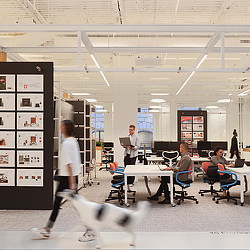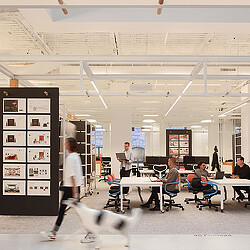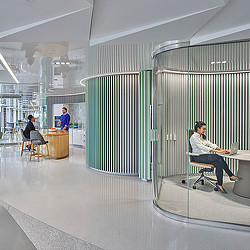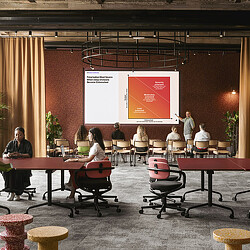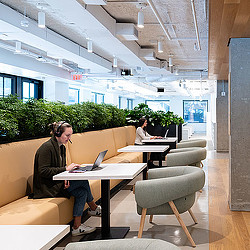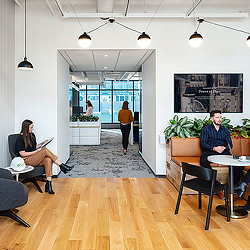Want a High-Performing Workplace? Here’s What Matters Most.
Our global research identifies what makes a high-performing workplace and what design factors matter most.

Note: This blog is the second of a blog series sharing insights from Gensler’s Global Workplace Survey 2024. Read part one here.
Elite athletes know the importance of the environments in which they train to maximize their performance. Top performers in the workplace follow a similar model — they’re the people at the top of their organizational game, driving performance and innovation across the company, and they also need the best workplaces to optimize their performance. Gensler’s global workplace research identified what makes a high-performing workplace and what design factors matter most.
In our global study of 16,000+ office workers in 15 countries and 10 industries we uncovered that while work and employee expectations of the workplace have fundamentally changed, less than one third of workplaces have been redesigned in the last three years. That’s a missed opportunity! It’s time to reevaluate what matters most for workplace design.
Top performers have better workplaces and better experiences.
We explored performance at three different levels: an individual level measuring employee engagement, the team level measuring strength of team relationships, and an organizational level measuring a culture of innovation, which is an index Gensler has used since 2016. Each of these measures are composite scores of four to six questions to give us a more holistic understanding of performance. In this study, the “top performers” are respondents who score in the top 25% of each outcome — they are the most engaged, workers with the strongest team relationships, and those who work in the most innovative companies.
We saw that top performers work differently — spending more time learning and socializing, coming into the office to sit with their team, and working in locations outside home or the office. But we also found that top performers tend to have high-performing workplaces. When we mapped workplace performance against engagement, team relationships, and innovation scores, we found a direct correlation — these scores increased as workplace performance increased.
Top-performing individuals and teams, and the most innovative companies, have higher-performing workplaces.


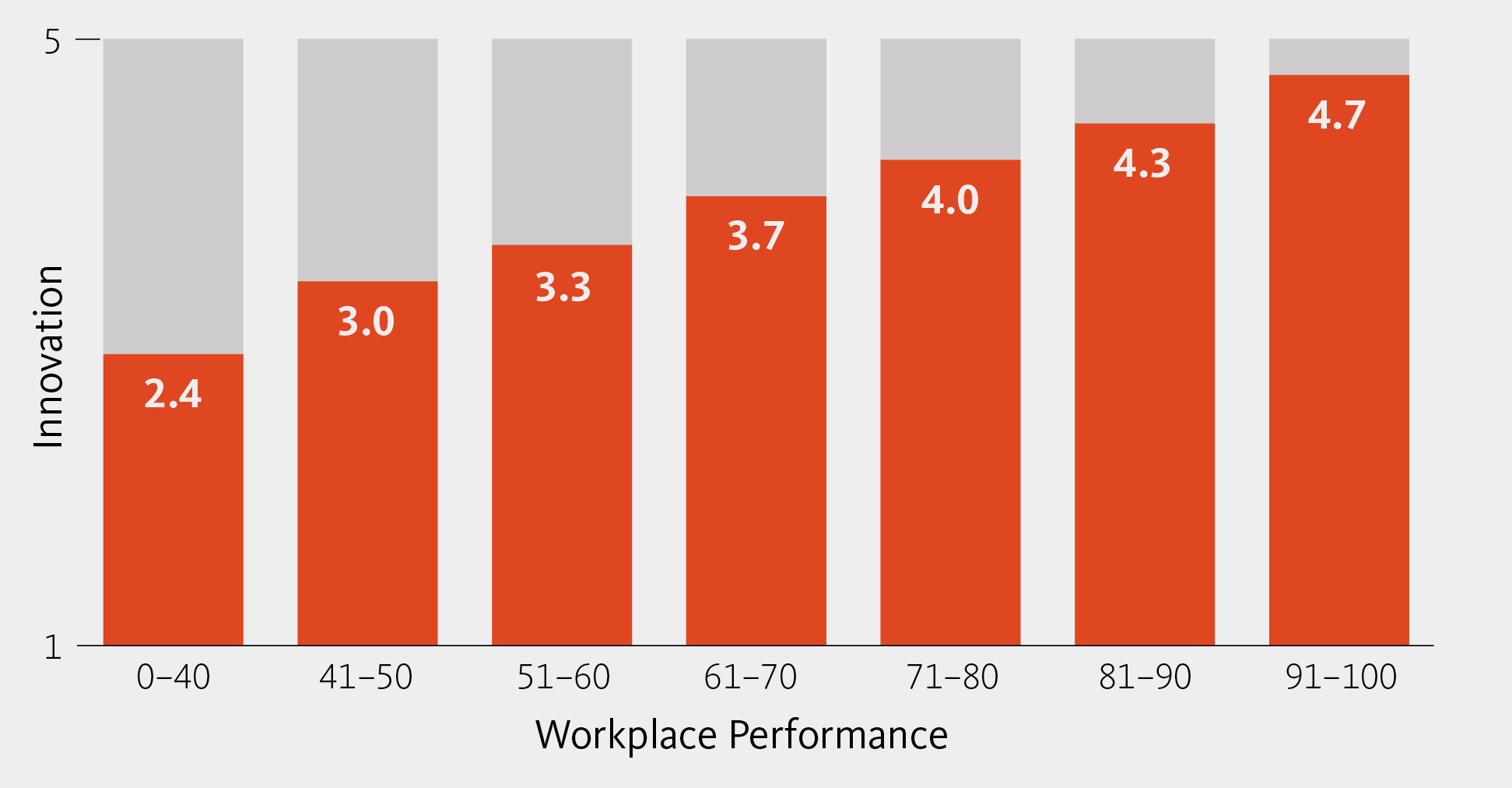
Defining workplace performance.
So, what do we mean by “workplace performance”? Gensler defines workplace performance as the average of two measures: 1) effectiveness, which is how the space supports work and 2) experience, which is how people feel about the space. One is focused on functional needs, while the other appeals to people’s emotions. Great design must satisfy both people’s needs and emotions.

Based on Gensler’s two decades of linking design to performance, we developed the Workplace Performance Index® (WPI) score to measure effectiveness and functionality of individual workspaces, meetings spaces, and common areas. Similarly, we developed an Experience Index (EXI) score to measure workplace experience. Both scores are comprised of multiple questions and variables. As we analyzed all 16,000+ global respondents, we can see both scores vary by industry. Workers in Sciences have the highest WPI and EXI scores, followed by workers in Technology, Energy, and Management Advisory. Government/ Defense reported the lowest scores and the largest gap between effectiveness and experience. Workplace performance varies by country as well, with India, Saudi Arabia, and UAE reporting the highest scores. To see the full results, see our report.

High-performing workplaces score among the top quartile (25%) for both effectiveness and experience. When we compare the top quartile to the bottom quartile, we see that employees who work in high-performing workplaces have better access to spaces for critical work activities and have workplaces that offer a more diverse range of work settings for individual and teams. We also see significant behavioral differences, such as learning something new or having fun, as well as reporting more likely to feel valued or empowered to experiment with new ideas. In fact, working in the office positively impacts employees in high-performing workplaces up to three times more than low-performing workplaces for every individual, team, and organizational outcome we measured.
The highest-performing workplaces leverage an ecosystem beyond the office.
Work occurs everywhere — so we explored not only the workplace, but also buildings and the surrounding neighborhood. We uncovered that workplace performance increases with building quality. We found that amenity-rich neighborhoods tend to attract high-quality buildings. In fact, 80% of high-quality buildings are located in city centers that naturally have a wide array of amenities and services.

We found a clear difference between access to amenities on-site or nearby for those in high-performing workplaces compared to those working in low-performing workplaces. While access to coffee and food was more similar, those in high-performing workplaces have two to three times more access to care services, such as elder, pet, or child care, and civic/cultural spaces, such as a public library or the arts/museums. For employees, these amenities, services, and places in the neighborhood can act as an extension of the workplace to meet both their work needs and provide experiences beyond the workday.
What makes an exceptional workplace?
At Gensler, our goal is to provide research that is actionable and can be applied to inform design to make our projects better and to measure the design impact, so our clients perform better. This research was no exception. Based on a series of multiple linear regressions measuring space attributes that predict effectiveness and experience, we were able to identify what factors matter most in creating a “good,” “great,” or “exceptional” workplace.
We found that a “good” workplace is optimized for all five work modes. A “great” workplace includes three experience drivers: “beauty,” “welcoming,” and “inspires new thinking.” “Design look-and-feel” topped the list for effectiveness and “beauty” topped the list for experience. Design matters. Uniqueness matters as well. An “exceptional” workplace differentiates by including unique factors both in and out of the office. Check out the full report to see the factors for each work mode.
We believe workplaces are designed for the top performers of our clients’ organizations to help them perform at their individual and collective best. They need high-performing workplaces, just as elite athletes need great training spaces and equipment.
Download Gensler’s Global Workplace Survey 2024 to learn how to convert our knowledge of how employees work into design outcomes that can elevate workplace performance from good to great.
For media inquiries, email .


